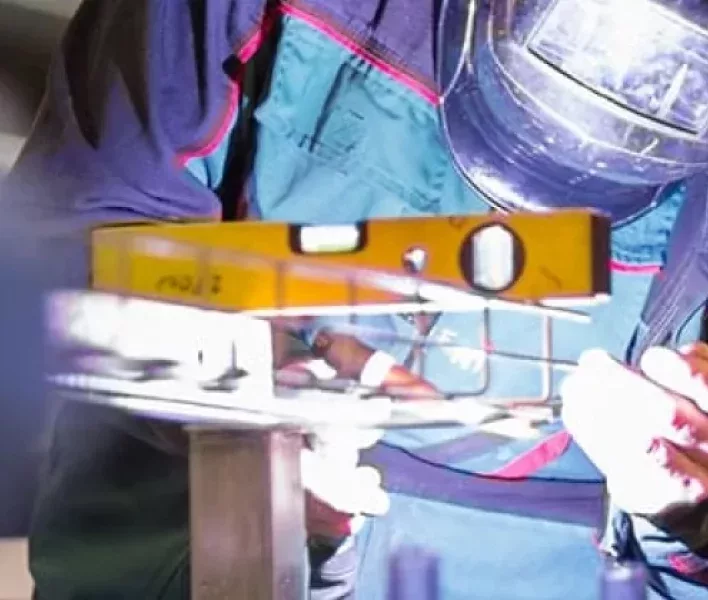
Microfluidic Fabrication
Rapid Fabrication of Microfluidic Devices from Prototyping to Full Scale Production
KNOW THE FEATURE
Rapid Fabrication of Microfluidic Devices from Prototyping to Full Scale Production
Potomac’s broad range of microfabrication tools and technologies has finally made the promise of microfluidic devices come true. Utilizing tools such as lasers, micro-CNC, hot embossing and micro-3D printing, Potomac has broken the barriers that prevented microfluidics from becoming mainstream. Our focus has been to create technologies that speed up the development process, lower the cost of prototypes, customizaiton and a strategy for ramp-up focused on meeting deadline and target production pricing.
WHAT WE CAN DO
Microfluidics Capabilities
Since 1982, Potomac has been recognized by both commercial and government agencies for innovative contributions to areas such as medical device manufacturing, biotech and electronics fabrication. Its high tech facility is located at bwtech@UMBC Research and Technology Park in Baltimore, MD.
microfluidics production
Rapid Fabrication of Microfluidic Devices from Prototyping to Full Scale Production
During process development the emphasis is to rapidly and flexibly fabricate small numbers of prototype microfluidic devices for evaluation. A “proof of concept” for manufacturing a device capable of achieving performance requirements is executed and several iterations of product design, testing and optimization may be executed before the design of the device is finalized. Because the design parameters of the microfluidic device typically change over the course of this phase, direct machining or laser manufacturing methods which allow for rapid manipulation of feature dimensions are favored over expensive, high throughput but less flexible mold-based fabrication processes. Direct machining methods also allow for the fabrication of partial chip designs which are quicker to fabricate and enable the quick screening of difficult features including microchannels and pillars. The primary goal of process development is to establish the correct design specifications of the device in the application prior to scale-up. Because changes in design parameters are common during this phase both flexibility and speed manufacturing is of primary importance. Once the prototype device is completed, Potomac can additional layers to it, bond covers and drill port holes.
The goal of scale-up is two-fold, first to increase volumes and reduce the unit cost and secondly to develop the know-how required to scale the process to commercial volumes. For polymer based microfluidic devices, mold-based processes such as hot embossing and injection molding are the technologies commonly used for that purpose. However, developing an effective scale-up solution for a microfluidic device requires an understanding of the integrated microfabrication system that includes not just the replication processes mentioned above, but the post-replication operations of bonding, surface treatment and interfacing u0026amp; connection. In addition, it also requires an understanding of the economics of microfabrication; in particular, the relationship between unit cost and volume which drives critical decisions on when to transition from batch to continuous operation and from one replication technology such as hot embossing to another such as micro-injection molding. To enable these critical decisions a technoeconomic model is developed which enables the engineer to perform sensitivity analyses for different production scenarios. Many engineers make the mistake of assuming that transitioning to a higher volume replication technology will automatically reduce the unit cost; in fact the minimum unit cost is usually dictated by the other processes of the microfabrication system such as bonding, surface treatment and interconnection. The most economic microfabrication system matches the appropriate fabrication technologies to the desired manufacturing volume eliminating “bottlenecks” in the process, and as a rule-of-thumb the unit cost of the device for a well-designed system can be expected to decrease by an order of magnitude after scale-up. A well-designed microfabrication system also enables a smooth transition to higher volume technologies when the production requirements demand.
u003cdivu003eA critical objective of scale-up is to design the microfabrication system for commercial volumes and the integrated microfabrication system should be designed to deliver the microfluidic product at the minimum unit cost for the specified volume. Equally important is that the system be designed to allow for scale-up to larger volumes once product demand increases. As mentioned above, this can only be achieved with a thorough analysis of the microfabrication system that provides insight on how the individual operations impact the integrated system at different production volumes as well as a cost model that models the unit cost as a function of production volume.rnrnu003c/divu003ernu003cdivu003eThe purpose of technology transfer is two-fold; to transfer the commercial microfabrication process defined during scale-up to manufacturing and secondly to develop the Process Technology Package (PTP) for future scale-up when production volumes increase. Technology transfer to manufacturing first and foremost entails developing the standard operating procedures (SOPs) for each operation of the microfabrication system. In addition, it entails training operators and technicians to achieve the Key Performance Indicators (KPIs) that include quality control, yield and cycle time repeatably and consistently. As a rule of thumb, you can expect that at the conclusion of technology transfer the unit cost will be further reduced by a factor of 2 or greater. Eventually the scale of the microfabrication system may need to increase to accommodate increasing demands for your product and with proper foresight the system will have been designed to enable a smooth transition to higher volume manufacturing. Development of a technoeconomic model for the microfabrication system as described above will enable you to anticipate in advance the next generation of technologies that will be required and the current processes that will need to be optimized in order to further scale-up manufacturing. Using this insight, microfabrication engineers can customize the development effort to collect relevant data for that purpose during the scale-up phase. This data would become an integral part of the Process Technology Package for use when production requirements increase.u003c/divu003e

MATERIALS
Everything you need for your business
Since 1982, Potomac has been recognized by both commercial and government agencies for innovative contributions to areas such as medical device manufacturing, biotech and electronics fabrication. Its high tech facility is located at bwtech@UMBC Research and Technology Park in Baltimore, MD.
INDUSTRIES
Business to collaborate and organize
Since 1982, Potomac has been recognized by both commercial and government agencies for innovative contributions to areas such as medical device manufacturing, biotech and electronics fabrication. Its high tech facility is located at bwtech@UMBC Research and Technology Park in Baltimore, MD.











